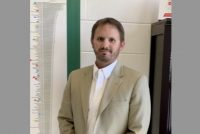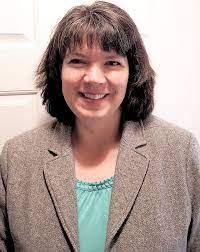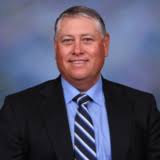Idaho’s schools have a $66.5 million problem — and it’s impacting the state’s most vulnerable students.
Since its inception, special education has been underfunded nationwide.
Public schools are required to provide special services to fulfill the needs of students of all abilities — but they often aren’t given the money to do so, at least not all of it. The federal government’s promise to fund 40% of states’ special ed costs has never been fulfilled, and state governments often don’t make up the difference.

“For as long as I’ve been teaching and I’ve been in education, there has been a discrepancy between what a district spends to educate the students requiring special education services and what they’re actually reimbursed,” said Ryan Cantrell, a longtime educator and current chief deputy superintendent at the State Department of Education.
In Idaho, school districts and charters are left to fill that gap — and it’s nearing $67 million.
That hole causes local education agencies (a term that refers to public school districts and charters) to pinch pennies, shift around money, dip into discretionary funds and turn to local taxpayers to foot the bill. It contributes to high turnover rates among special education teachers and paraprofessionals, and ultimately can impact the level of resources and attention that students receive.
Education leaders know there’s a problem. But with an antiquated funding formula, which hasn’t been rewritten since 1994, and little movement from the federal government, solutions are hard to come by.
“It leaves districts to look at their own district budgets, and ask themselves: How are we going to cover the gap between what we receive from the federal government and what we receive from the State of Idaho, compared to the actual costs for our students to receive a special education?” said Cantrell.
Special education funding is complicated
There are nearly 37,000 special education students in Idaho — that’s about 11.6% of the state’s total student population.
Let’s put that into perspective — if all of Idaho’s special education students were lumped into one district, it would be the second largest in the state, just after West Ada, which sits at 40,000 students.
But neither the state nor the federal government provides enough funding to cover the costs of all of those students and their needs. In the 2021-22 school year, the funding gap for special education sat at an estimated $66.5 million, taking into account federal and state appropriations. That leaves schools without funding for about 7,760 students.
Here’s a rundown of how special ed is funded, and how the gap is calculated
Public schools are required to fulfill the needs of every student in special education, no matter how costly it can be.
If a high-needs student moves into a district halfway through the year, and requires a full-time nurse to accompany them at school, the district must find a way to cover that cost, even if it takes up half of the annual special education budget.
And that’s how it should be, education leaders say.
“The school district cannot arbitrarily say, well, we can’t afford that,” said Cantrell. “We’re not going to do it. That’s not an option.”
Serving every child, no matter what level of ability, is public education’s purpose. Special education directors, teachers, paraprofessionals and other staff work tirelessly to ensure that students’ needs are fulfilled, even under significant funding crunches.
The state is also required to fund special education first — federal funding is a supplement to that.
Under the Individuals with Disabilities Education Act (IDEA), schools are bound by a provision known as Maintenance of Effort (MOE), which requires districts and charters to (barring a few exceptions) budget the same amount of money, or more, in their special education budgets year after year.
Essentially, once money goes to special education, it stays there.
In total, districts and charters spent about $317 million on special education statewide in the 2021-22 school year.
That amount includes only the expenditures that were 100% identifiable as special education costs — in reality, special education demands likely take up even more funding, but measuring those extra costs is difficult if they aren’t identified specifically as special education expenses on budget reports.
Of the total amount, about $215 million came out of the state’s general fund — the chief operating fund for school districts and charters statewide. The state allocates that amount based on two divisors — it covers special education costs for 5-6% of students. In Idaho, the actual percentage of students who need special education services hovers around 11-12%.
For the 21-22 academic year, the K-12 general fund sat at about $2.06 billion.
But only about $148 million of that was allocated by the state for special education, leaving districts and charters on the hook for the remaining $66.5 million, according to calculations from the State Department of Education.
And that’s just state funding.
Congress never fulfilled its special education funding promise
The federal government also disperses special education money, through the Individuals with Disabilities Education Act (IDEA).
When IDEA was enacted in 1975, Congress promised that the annual appropriations would cover 40% of a state’s annual special education expenditures.
But federal funding has never risen to that promise.
Nationally, IDEA funding has hovered around 18-20% for the past 48 years, with one spike to 33% in 2009, just following the recession. In Idaho, IDEA funding has never covered more than 20% of annual special education expenditures, and it varies between school districts based on their individual overall costs.
In fiscal year 2022, districts and charters received $61 million through IDEA. That funding is part of the $317 million in total special education expenditures.

Districts can also receive reimbursements for some health-related special education expenses through school-based Medicaid, but the process is cumbersome, said Ramona Lee, special education director for the West Ada School District.
Essentially, schools pay the full amount for Medicaid-eligible services first. They then submit a reimbursement form to the federal government — that form requires schools to provide a 30% match to the approved reimbursement amount, using state or local funds, not federal.
So, before receiving any money from the government, schools are on the hook for 100% of the cost of services. Schools then receive a partial reimbursement at a net 70% from the government.
“It’s like me giving you $3 and you giving me back $10,” said Lee.
And families can refuse Medicaid reimbursement, leaving some schools on the hook for 100% of the expenses anyway.
Between the allocated state funding ($148 million) and IDEA funding ($61 million), schools had about $209 million in special education funding to work with in FY22. With another $41 million offset through Medicaid reimbursements, the total gets up to about $250 million.
But to fulfill federal and state special education requirements, which include the maintenance of effort and IDEA requirements, districts are spending at least $66.5 million more on special education than they are allocated — for a total of $317 million.
In reality, that gap is likely more extensive, considering the special education expenses that aren’t 100% identifiable. And as more students are identified with disabilities, and the state continues to operate on an antiquated funding formula, the gap is widening.
Gap exacerbates staffing, funding challenges
Funding is tight, turnover is high and resources are hard to come by. The special education funding gap only exacerbates the challenges that already prevail in schools across the state.
In many cases, districts turn to local taxpayers for funding support through supplemental levies — many of which have a budgeted amount for salaries or special education services. But it’s growing harder to pass bonds and levies, as property taxes rise and education grows more polarized.
But when the special education budget is tight, districts are forced to split up the funding pie differently in order to meet their mandate. Districts can divert funding away from other areas of education, including those that are funded through discretionary funds. Many of those shifts have a double-edged impact on special education students, Lee says.
For example, if general education class sizes are increased to pay for a special education teacher or paraprofessionals, that still impacts special education students because they are general education students. They still use general education classrooms and services, and large class sizes will have an impact on learning no matter where it happens.
“All students that receive special ed services are gen ed students first,” Lee said. “So they still need a gen ed classroom, a teacher, books, a library, a principal, lights…all those things that come with education.”
And because funding is tight, districts have a harder time meeting every student’s needs, despite educators’ best efforts.

According to Kindel Mason, director of support services for the Twin Falls School District, and president of the national Council of Administrators of Special Education, special education is the number one litigated issue in schools nationwide, and funding is a major factor.
“A lot of school districts are doing everything they can to scramble and put things in place to meet the needs of kids,” said Mason. “But I would just say, either the law is very cumbersome…or a lack of resources is causing school districts to not be able to provide everything they need to.”
Still, staffing is the biggest challenge for special education right now, agreed Lee and Mason.
With limited funding, special education case loads are high — in Twin Falls, some teachers have 30-40 students in a resource room, and 10-15 students in an extended resource room, said Mason. For many educators, that level of work isn’t sustainable.
In West Ada, the teacher shortage looks a little different.
“We don’t have a shortage of special ed certified teachers,” said Lee. “We have a shortage of special ed certified teachers who are teaching special ed. A lot of them have dual endorsements…and a lot of them move to general ed because special ed does come with a lot of work. There’s a lot of paperwork, and because the funding formula is such a challenge, case loads are typically higher than they are in a lot of other states, and that’s hard.”
Both districts — like others across the state — are also struggling to hire paraprofessionals, the classified employees who do the grunt work to support classroom teachers.
In the case of parapros, the already dismal special education funding is further compromised by a $97 million classified staff funding gap, according to a 2022 report from the Office of Performance Evaluations. The struggles that districts face in hiring parapros for general education classrooms are multiplied when hiring for special education classrooms.
“Without the skill and support of these dream enhancers, the visionary SpEd teacher would drown in their duties and functions.” — Amy Watts, special education teacher and advisor at COSSA, Idaho Future Ready Academy.
“We did raise our rates by several dollars an hour, even above the general education paras to get those people in,” said Mason. “That seems to be working.”
But it comes at a cost, Mason says. When wages are raised, the district can’t hire as many people, leaving teachers without the extra hands that they need. When those hands disappear, Mason says, students lose out on critical one-on-one time with teachers, and teachers lose out on critical teaching time.
“Our biggest commodity is people doing the work,” he said.
‘The loyal para is the engine that keeps the enterprise running smoothly’ — but they’re hard to find
Amy Watts is a virtual, kindergarten through ninth grade special education teacher and advisor with the Canyon-Owyhee School Service Agency (COSSA) and Idaho Future Ready Academy. Before starting at COSSA, Watts taught special education in brick-and-mortar schools in the West Ada district, as well as Middleton. Watts says that paraprofessionals are essential to special education classrooms.

“One benefit of a special education classroom is the small class size, which allowed me to truly get to know the students,” Watts wrote to EdNews in an email. “I often had a classroom aide or other specialist in the room, so I could take time to address an individual student’s needs without worrying that such one-to-one attention was taking away from the group as a whole. This degree of personal investment and attention to the individual is crucial in a special education classroom, and it creates lifelong bonds that both the student and team find meaningful and rewarding.”
Now that she’s in an online teaching environment – a move she made in 2019 after watching her district’s elementary schools reach capacity – Watts says she doesn’t feel the pinch of the SpEd gap, but she knows it’s a real issue for many others.
“It is concerning to me that there is a demand for classified and supporting staff due to the low pay and need for better health insurance coverage,” Watts said. “Loyal paraprofessionals are hard to find, but once they are discovered, wise is the leader who values them. Special education paraprofessionals that I have worked with in the past have been rare and productive, constantly looking for ways to make the lead special education teacher successful in his or her classroom. They unselfishly serve behind the scenes, tirelessly and tediously. Because of a loyal team member’s sixth sense to anticipate needs, they know how to encourage excellence.”
“They learn to spur the lead SpEd teacher with thorough questioning and problem solving so the leader’s intuition can be clarified and verified. The loyal para is an encourager and an implementer. They get things done by converting the leader’s vision into reality. Without the skill and support of these dream enhancers, the visionary SpEd teacher would drown in their duties and functions…It is no secret that the loyal para is the engine that keeps the enterprise running smoothly.”
